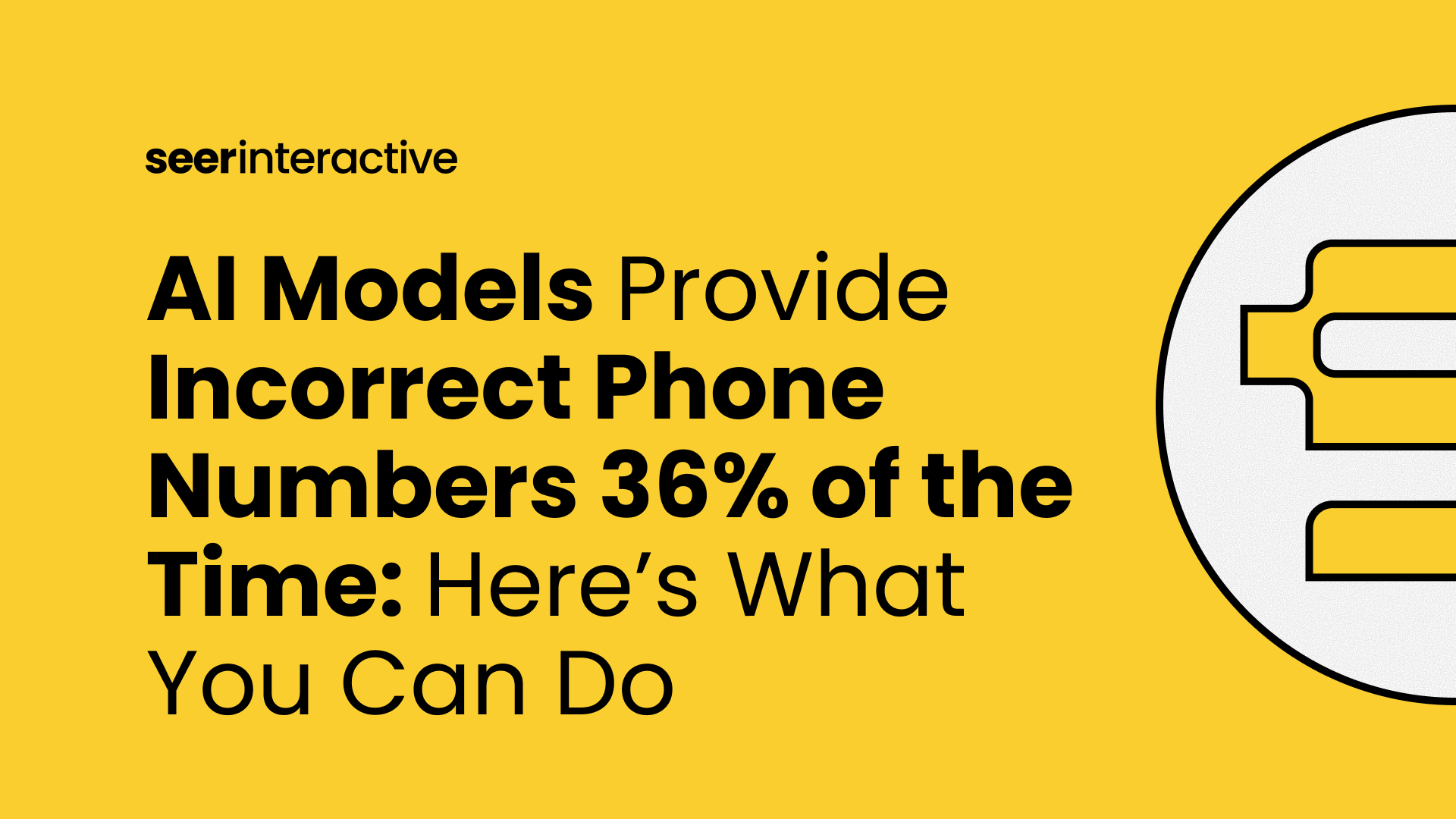With AI poised to change the way we work in the marketing industry as we know it, we’ve been heads down experimenting with ways our team can be more efficient.
Keyword research is the backbone of any SEO and PPC campaign. There are lots of keyword categorization tools to help, but let’s face it; with an ocean of keywords out there, it can be quite a task to categorize and analyze them efficiently.
ChatGPT is about to make your marketing life a lot easier.
In the past, it's taken between 15 and 30 hours to categorize keywords for a website with ~1 million hits per year.
With generative AI - we can cut that down to less than 2 hours.
In this guide, I’ll take you step-by-step through categorizing and analyzing keywords using ChatGPT-4.
Why Categorize Keywords?
Categorizing keywords is a critical aspect of a successful SEO strategy. It not only helps organize your website in a way that is user-friendly and intuitive, but also allows you to break down user intent so you can create content that truly resonates with your audience. By categorizing keywords well, you can identify the factors that are driving success for other sites in the SERPs, and apply these insights to your own strategy.
Tools Needed to Complete AI-Driven Keyword Categorization Analysis
Initial Keyword Research Exploration
Step 1: Access your data
First things first, we need help ChatGPT understand our keyword data. We’ll upload our CSV and ask it to perform an initial keyword analysis. This is recon to understand the terrain - for example, identifying unique root domains and examining the distribution of search rankings.
Chat GPT Prompt:
Please connect to my uploaded CSV dataset and provide an initial exploratory analysis. Also, show me a list of my top 15 unigrams for highest monthly search volume (MSV) keywords.
In an exploratory analysis, ChatGPT will show you:
- Basic information about the dataset, including:
- Number of rows and columns
- Column names
- Data types
- Calculated summary statistics, like:
- Mean
- Median
- Standard deviation
- Minimum
- Maximums for numerical columns
- Do some data cleaning and quick analysis:
- Check for missing values
- Count unique values in categorical columns
- Visualize the distribution of data
- Explore correlations
- Check for missing values

We've also asked it here to show me a list of unigrams for my highest monthly search volume (MSV) keywords, to help us understand top-level context for categories.
Organize Keywords Alongside KPIs
Step 2 & 4: Organize keywords by positions & search volume
We group by rank positions and search volume so we can see what keywords we're:
- Winning on
- Within striking distance of high ranks
- Ranking poorly for
We can later use this data to determine priority of the tactics we wish to execute on.
Chat GPT Prompt:
Please add a position group column, with 1-3,4-10,11-20,21-30,31-40,41-50,>50. Then, add a MSV Group column that groups MSV into high, medium, and low groups, where high is 1000 or greater, medium is <1000 and >50, and low is 50 or less.
ChatGPT chats you back with the keyword grouping:

Create Keyword Categories in Your Data
Step 5: Add a 'Brand vs Non-Brand' Category Column
We filter our keyword categories by branded vs non branded keywords because:
- The intent of a user leveraging branded terms is typically very different from that of a non-branded user
- Users are typically at different points in their journey
Chat GPT Prompt:
Please add a column for Brand v Non-Brand, and categorize and keywords that contain my brand names as Branded, else, Non-Branded. Please prompt me for what my brand names are.
And now ChatGPT will ask you for your brand names:

Step 6: Add Product or Services Category Column
Creating a category for your product or services enables you to:
- Ensure alignment back to the things that make the business money
- Understand where you need to grow, double down, and stop focusing
For this example, you'll see 'Service Line' column added to our dataset -- SEO, PPC, Analytics, CRO and Creative.
Chat GPT Prompt:
Please add a 'Service Line' column to the dataset and categorize keywords into service lines. Offer some example service lines based on my keyword dataset, and also prompt me for some example service lines please.
ChatGPT will even guess at your service lines based on the keywords you submitted. To cover all it's bases, ChatGPT also asks you if you'd like to add any additional category dimensions.

Here's how I replied to ensure we had coverage of all service lines:

Step 7: Add Audience & Industry Category Columns
Categorizing by audience and industry allows you to:
- Craft campaigns that resonate with specific audiences within specific industries
- Understand the nuances of small businesses vs enterprise
Chat GPT Prompt:
Please add an 'Audience' column to categorize keywords into audience types like Small Business and Enterprise, and an 'Industry' column for sectors like Insurance and Banking. Offer some examples based on my keyword dataset, and also prompt me for additional examples.
Step 8: Add Customer Funnel Stage Category Column
Keywords funnel stages are represented by things like Awareness, Interest, Desire, and Action. We do this to:
- Understand the customer journey
- Tailor campaigns to meet audiences where they are in the customer funnel
Chat GPT Prompt:
Please add a 'Funnel Category' column to categorize keywords into funnel stages like Awareness, Interest, Desire, and Action.
Step 9: Add Competitor Categories
If you're fortunate enough to have competitor rankings, we can use that data for additional categorization. We’ll analyze competing brands and compare their service offerings to our keywords and categories. This data helps us figure out:
- Capture more market share
- Stay ahead of competition
Chat GPT Prompt:
Please analyze the competition and identify gaps in service offerings compared to our keywords and categories.
As you can see, ChatGPT will even write code and perform steps to analyze your competitor's keywords!

Visualizing the Data
Step 10: Create graphs and charts to visualize categories by KPIs for storytelling
Lastly, a picture is worth a thousand words. Being able to build data visualizations with natural [plain] language is going to be a game changer for any industry that, well, uses data! We'll be able to:
- Get faster insights
- Increase accessibility to data-driven decisions for more folks at your company
- Improved collaboration among individuals with different expertise levels
- Reduced cognitive load by focusing on insights rather than syntax or coding
We’ll use ChatGPT to create graphs and charts to visualize the distribution of our keywords across different categories. This helps in understanding the data a ta glance and spotting trends or patterns that can inform our strategy.
Chat GPT Prompt:
Please create a graphs to visualize the distribution of keywords across different categories.
Pro Tip: Tell ChatGPT your brand colors!

Make sure your data stays available to query
Step 11: Save Your Data
Chat GPT Prompt:
Save the final dataset with all the new columns and visualizations for further analysis, and a downloadable CSV.

Cheat Code: The All-in-One Keyword Categorization Prompt
For those who like to get things done in one go, here's a single ChatGPT prompt that encompasses the entire process. This assumes you have ChatGPT Plus with GPT-4's advanced data analysis capability.
1. I will upload a CSV file of keywords to categorize.
2. Connect to the dataset for the uploaded CSV file, and provide an initial exploratory analysis. Also, show me a list of my top 15 unigrams for highest monthly search volume (MSV) keywords.
3. Add a 'Position Group' column, grouping positions into ranges like 1-3, 4-10, 11-20, 21-30, 31-40, 41-50, and >50.
4. Add an 'MSV Group' column to group MSV (Monthly Search Volume) into high, medium, and low categories: high (1000 or greater), medium (<1000 and >50), and low (50 or less).
5. Add a column for Brand v Non-Brand and categorize keywords containing your brand names as Branded; otherwise, categorize them as Non-Branded. Please provide your brand names when prompted.
6. Add a 'Service Line' column and categorize keywords. Offer some example service lines based on my keyword dataset, and also prompt me for additional examples.
7. Add an 'Audience' column to categorize keywords into audience types such as Small Business and Enterprise, and an 'Industry' column for sectors like Insurance and Banking. Offer some examples based on my keyword dataset, and also prompt me for additional examples.
8. Create a 'Funnel Category' column to categorize keywords into stages like Awareness, Interest, Desire, and Action.
9. Analyze the competition and identify gaps in service offerings compared to the keywords and categories.
10. Generate graphs to visualize the distribution of keywords across different categories.
11. Save the final dataset with all the new columns and visualizations for further analysis, and a downloadable CSV
Your on your way to AI-Driven Insights
And there you have it! By following these steps, you’ve started on the journey to combining AI with your SEO skills. ChatGPT can hugely speed up your time to execution, helping you structure SEO and PPC campaigns with precision and ease. Remember, the prompts can be tweaked to suit your dataset and goals.
So, go forth and conquer the keyword landscape. Happy researching!
P.S. Getting stuck? We're here to help! 🎉



